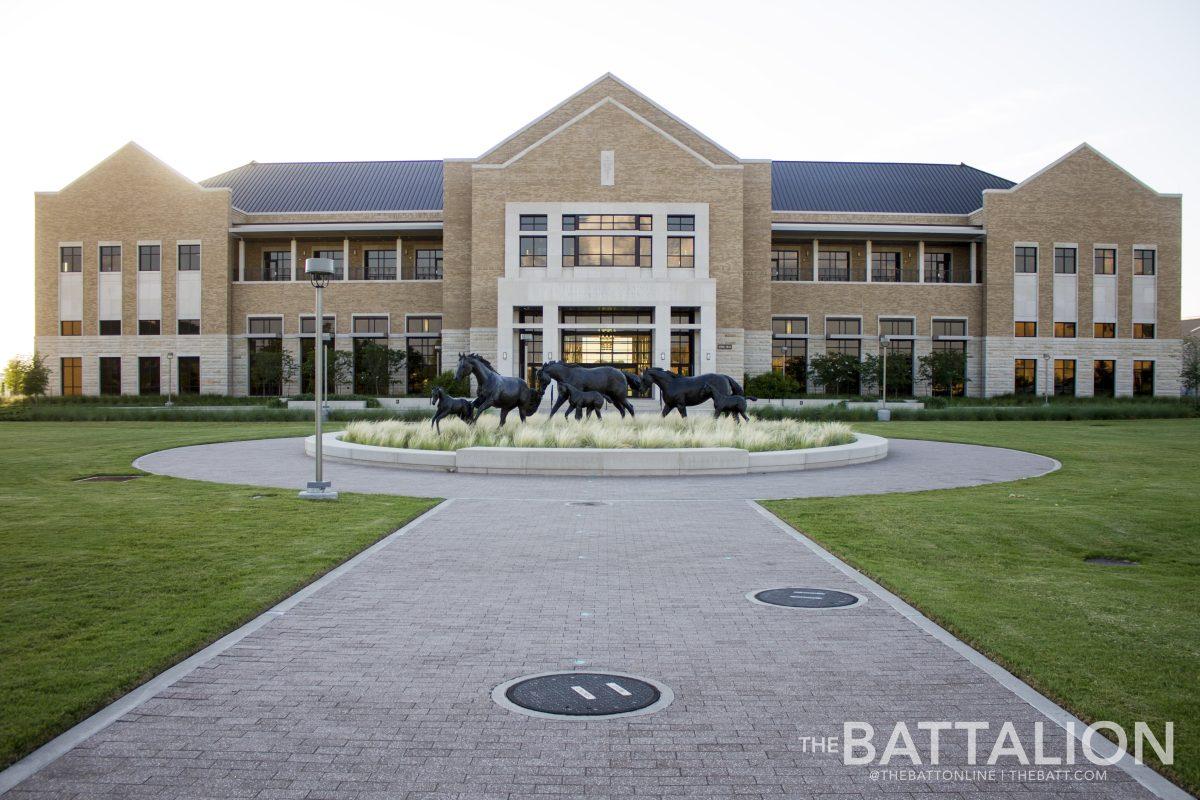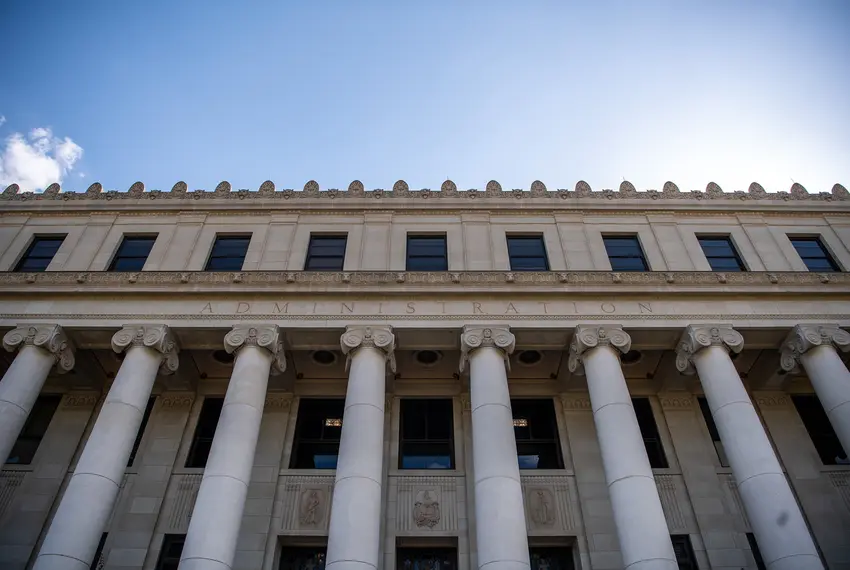Chemistry is the bane of my existence. Hours staring at a collection of Cs and Os during lectures and mixing acids in labs have all but melted my brain cells. Thankfully, I didn’t suffer alone — my pals over in biomedical sciences, or BIMS, made the experience bearable, and as much as I hated those exams, our study sessions were the start of a beautiful friendship. That’s why I’m concerned about their present situation.
Hold a conversation with any BIMS student, and you’ll quickly find their department is plagued by lackluster advising and severely limited class seating, leading to potential delays in graduation.
Let’s start with the advising struggles. BIMS Aggies should be able to access their academic advisers within a reasonable timeframe, as they are key to ensuring students graduate on time. Unfortunately, students like BIMS junior Lauren Cramer have not found the support they need.
“I emailed [my adviser] 10 days ago,” Cramer said. “I have still not received a response even though I’m struggling to the point that I have wanted to drop out [of BIMS].”
To get the help she needed, Cramer said she went to walk-in hours only to be met with an empty waiting room. Over the course of two days, Cramer said she waited over six hours.
“They sent a message saying, ‘We advise you to come in at 8 [a.m.] so everyone can get seen,’” Cramer said. “They didn’t enter the chat until 8:30 [a.m.], and I didn’t get seen before I had to go to my lecture.”
Sadly, Cramer’s struggle isn’t an isolated case, as BIMS junior Phillip Xenophontos has experienced a similar problem with drop-in advising. Xenophontos said during add-drop week, the BIMS advisers were only doing walk-in advising.
“I went Monday in the morning [and] I waited for … two hours,” Xenophontos said. “At that point, I was like, ‘OK, I have things to do.’”
After preparing for the week, Xenophontos said he returned that afternoon to no avail. So he tried again on Tuesday. And again on Wednesday. And again on Thursday. Fortunately, Xenophontos said he managed to get in — after four days of attempts to talk to his adviser.
BIMS junior Braeden Brinson echoed these problems with walk-in advising.
“I was trying to contact the advisers about anatomy,” Brinson said. “And the first two days I was in walk-in advising, I didn’t get in at all, and I was in the adviser room for six or seven hours before I just gave up that day.”
It would seem like an easy solution to hire more advisers so people aren’t stuck in a waiting room.
However, even after effectively being on hold for 12 to 14 hours, Brinson said his advisers told him there weren’t any spaces available in his required anatomy class.
“Now, I either have to hope that I get a seat in the summer, or I have to skip the [prerequisites] and take it with physiology,” Brinson said. “They’re asking me to delay a class I need to take for a whole year.”
Brinson said he may even be looking at taking an extra semester, all because the department only offers about 180 seats for his anatomy class.
Now, 180 seats may sound like a large number, especially for an upper-level class. However, according to the Texas A&M accountability website, as of fall 2021, there were over 2,600 BIMS students enrolled. Even if you use generous math and round down to 2,400 students, that still comes out to about 600 students per graduating class. According to the biomedical sciences degree plan, VIBS 305, or biomedical anatomy, is a required course for juniors during the spring semester.
That’s 180 seats for 600 students.
Keep in mind this number doesn’t account for seniors who found themselves in Brinson’s situation, having to take anatomy a semester late or repeat the class. And, Brinson isn’t the only student in this predicament.
“One of the classes I didn’t get, [and] I know a lot of people didn’t get, was biomedical anatomy,” Xenophontos said. “And that’s basically a prerequisite into physiology.”
Those who choose to take anatomy alongside physiology find themselves struggling. Xenophontos said taking the two together is like taking biochemistry without taking organic chemistry. For those who are less inclined to biology, it’s like hopping on a motorcycle before learning to ride a bicycle.
To be fair to the advisers, there are only so many spots for them to use force requests to get students into anatomy. However, BIMS students have other contentions with their advisers.
Right before the spring semester started, Brinson said the advising staff told him and many other students that an elective they were registered for couldn’t be taken concurrently with biochemistry. This sudden announcement left quite a few BIMS Aggies scrambling, including Brinson and Xenophontos.
“It dropped me below 12 hours,” Brinson said. “I had to put in a … form that made [my] research lab two hours.”
Likewise, Xenophontos said he was at risk of not having full-time student status.
“On the last day of add-drop, that Friday morning, [the advisers] were able to put me into a microbiology class,” Xenophontos said. “At that point I was finally put into being a full-time student.”
Cramer said she felt as if the advisers weren’t truly listening to her problems.
“They won’t really listen to you until you say something drastic like, ‘Wait, what did you say?’” Cramer said. “I just feel like no one listens anymore.”
It’s unacceptable for a department to not have enough classes for its students to take. Many Aggies have financial aid that depends on them being full-time students, and taking additional semesters may add to student loan debt. Furthermore, because BIMS is a pre-professional program, graduating late because of class unavailability can significantly throw off post-undergraduate plans, Xenophontos said.
“I have a son and a girlfriend that I’m with that are depending on me to finish college as soon as I can,” Xenophontos said. “And then subsequently get a job and then hopefully go to medical school, and all of that needs to be done in a pretty specific time frame.”
Not getting into a class isn’t something BIMS students can kick down the road; their degree plan is incredibly rigid. A&M’s failure to provide an appropriate number of classes and an adequate number of advisers is increasing the number of students who need to take upper-level courses at one time. Eventually, without additional faculty and staff, the backlog will be worse than Wellborn Road on the first day of class. In fact, Cramer said she already feels the stockpile growing.
“If I go to advising, I say, ‘Hey, I’m struggling with this,’ and there’s an underlying problem that they just sweep over,” Cramer said. “Until you get to the root of the issue, it’s going to get backed up and backed up and backed up, and it’s so disappointing to have that.”
When the consequences of lackluster advising and limited seats in classes include thousands of dollars in tuition and student loans, extra semesters and delayed time to professional school, A&M’s administration has an obligation to take immediate action.
The BIMS department is already seeing a significant change, as A&M President M. Katherine Banks has decided to move the program into the new College of Arts and Sciences. Regardless of how this realignment affects BIMS, the program needs more dedicated advisers and additional faculty to facilitate the upper-level classes. Hopefully, the consolidation with three other colleges will not divert university administrators’ attention away from this crisis.
Our fellow Aggies in BIMS deserve better. Reducing bureaucracy and administrative costs is a great goal. However, these students need an investment right now, and money spent on students — the forefront of A&M — should be the priority.
Caleb Powell is a biomedical engineering junior and the opinion editor for The Battalion.
Opinion: There’s a crisis in A&M’s Department of Biomedical Sciences
February 23, 2022
Photo by Photo by Meredith Seaver
The Texas A&M College of Veterinary Medicine & Biomedical Sciences will partner with West Texas A&M to help expand medical research between the two schools.
0
Donate to The Battalion
$1765
$5000
Contributed
Our Goal
Your donation will support the student journalists of Texas A&M University - College Station. Your contribution will allow us to purchase equipment and cover our annual website hosting costs, in addition to paying freelance staffers for their work, travel costs for coverage and more!
More to Discover
















